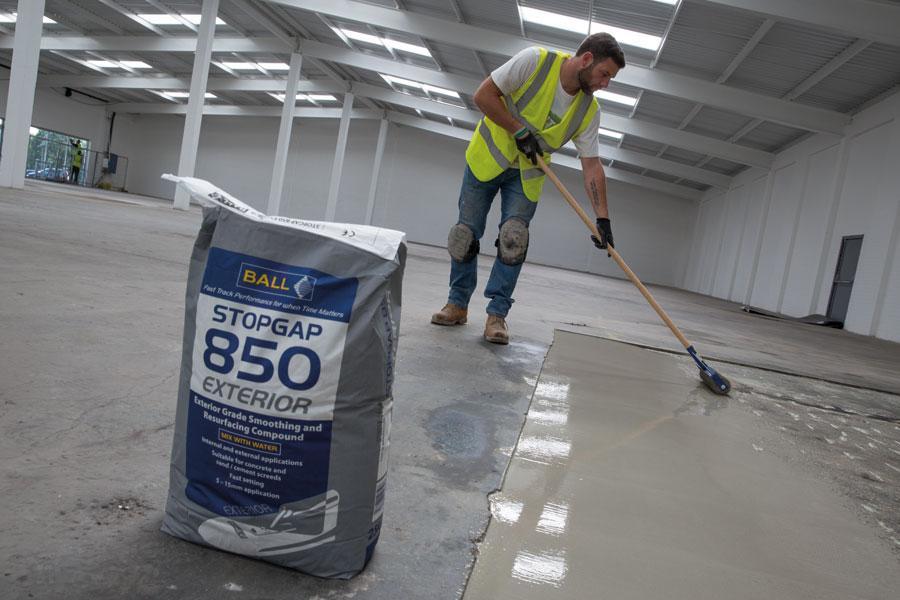Flooring in industrial settings will often be subject to greater stresses and strains than in other areas, and often subjected to heavy loads, such as forklift trucks or trolleys carrying heavy equipment. To ensure that a finished floor is able to withstand this daily exposure, while maintaining its integrity, aesthetic appearance, and safeguarding the health and safety of personnel, proper subfloor preparation using appropriate products is essential.
As with all flooring installations, flooring contractors working in industrial settings should start with a thorough assessment of the subfloor to ensure it is clean, sound, dry, and free from contaminants. Oil and grease, for example, are more likely to be present in such environments and can potentially threaten the integrity of the finished project if not dealt with effectively.
Where contamination is present but it has not penetrated too deeply into the subfloor, the mechanical removal of the top layer of the subfloor may be sufficient. When working with a newly laid concrete or sand/cement screeds, any laitance must also be mechanically removed beforehand and contractors should also check for any minor cracks and repair them before proceeding with the project.
Dealing with damp
The subfloor should also be checked for excess subfloor moisture; if the relative humidity (RH) is above 75%, preventative action must be taken to avoid moisture attacking adhesives and floorcoverings, potentially causing floor failure. In most industrial flooring applications, the most appropriate solution for excess subfloor moisture is to apply a liquid waterproof surface membrane, such as F Ball and Co’s Stopgap F77.
Once the subfloor has been verified as ready or, if required, corrective treatment undertaken, the selection of an appropriate levelling compound for the expected combination of traffic, loading, and environmental exposure will ensure the longevity and integrity of the flooring.
For industrial applications where floorcoverings are not required, rapid setting, industrial grade self-levelling wearing surface compounds, such as F Ball’s Stopgap 800 Wearcoat, offer an ideal solution. It has a special class abrasion resistance, making it perfect for upgrading and renovating new and existing internal floors, heavy-duty industrial applications including factories, warehouses and workshops.
Exterior applications
For external applications or for situations that may nominally be inside but still subject to external weather conditions, a purpose-designed exterior grade levelling compound is required. Stopgap 850 Exterior, for example, can be used in light to medium duty areas and once cured is unaffected by rain or frost. If required, it can be finished with a suitable non-slip coating or it can be left as a standalone exterior wear surface.
Due to its moisture tolerant properties, the product can also be used internally over damp, uneven concrete and sand/cement screeds prior to the application of a waterproof surface membrane.
Other considerations
In areas where water or other fluids may come into direct contact with the cured levelling compound, F Ball recommends that the surface is treated with a sealer, such as Stopgap Seal; a water-dispersed modified polyurethane sealer. This provides a hygienic and protective surface and eases maintenance by reducing the adhesion of dirt and other debris. It also offers a level of chemical resistance to many commonly found chemicals in industrial/commercial applications.
If it is the case that an internal floor requires a floorcovering, such as vinyl or other resilient material, a levelling compound formulated for heavy-duty use should be selected instead. This will ensure that the floor will be able to withstand heavy, concentrated loads, for example, from the wheels of a trolley used to transport heavy equipment or machinery.
www.f-ball.com


